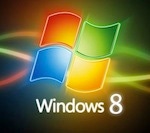I'm sure most IT professionals would have had at least a cursory look at the new Microsoft Windows 8 Customer Preview by now. It's a bold 'bet the house' move by Microsoft and quite ironic that it'
March 9, 2012

By CentraStage Guest Blog 2

windows-8-logo
I’m sure most IT professionals would have had at least a cursory look at the new Microsoft Windows 8 Customer Preview by now. It’s a bold ‘bet the house’ move by Microsoft and quite ironic that it’s the Redmond corner doing the big moves now while Cupertino’s latest efforts seems only incremental. It could just be an indication of how far each needs to move but could also be a clear indicator of the changing balance of power.Mobile is the new standard and Apple suddenly finds itself as the standard with Microsoft now fulfilling the role of challenger. Indeed, 2012 promises to be a very interesting year for those of us who make a living taking care of all these platforms.
Microsoft has said that Windows 8 will run on the same minimum hardware specs as Windows 7 — so that shouldn’t be a problem right? The thing is how many of your customers are still on Windows XP specs, and where does that leave them – and you? The official minimum requirements for the two operating systems are:
Windows XP Professional
Pentium 233-megahertz (MHz) processor or faster (300 MHz is recommended)
At least 64 megabytes (MB) of RAM (128 MB is recommended)
At least 1.5 gigabytes (GB) of available space on the hard disk
Video adapter and monitor with Super VGA (800 x 600) or higher resolution
Windows 7 Professional
1 gigahertz (GHz) or faster 32-bit (x86) or 64-bit (x64) processor
1 gigabyte (GB) RAM (32-bit) or 2 GB RAM (64-bit)
16 GB available hard disk space (32-bit) or 20 GB (64-bit)
DirectX 9 graphics device with WDDM 1.0 or higher driver
Clearly a machine spec’ed for XP is not going to run Windows 8 and a complete refresh — not just an upgrade — is going to be required. Windows 7 was launched in 2009 and XP eight years earlier in 2001. (Let’s try and forget about Windows Vista, shall we?) One would think that most XP users would have upgraded by now but a quick look online paints a different picture.
Statistics from sites like W3Counter or Wikimedia show Win7 and XP penetration about equal at around 35% each. We’re collecting over 3 million metrics per hour right now on CentraStage and our numbers, which are more business user focussed show 51% XP versus 38% Win7.
So while Microsoft says it shouldn’t be an issue that’s clearly not the case for those of us in the IT service outsource business. Many of our clients will be totally under spec’ed and will need to be budgeting for an extensive refresh program if they are planning on upgrading from XP to Windows 8 – or 7 for that matter. This is a conversation that needs to happen sooner than later as the official end of life (EOL) for XP is now set for 2014.

Ian_van_Reenen
Ian van Reenen is CTO CentraStage, which works closely with MSPs. Monthly guest blogs such as this one are part of MSPmentor’s annual platinum sponsorship. Read all of CentraStage’s guest blogsYou May Also Like
